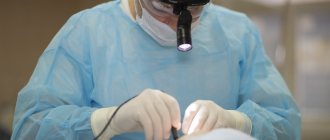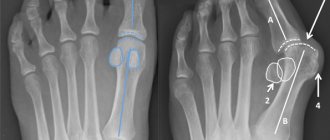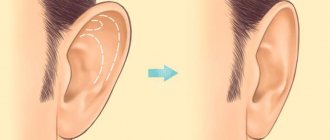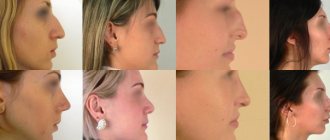A smile is a person’s calling card, especially if it is framed by cute dimples on the cheeks. There is an opinion that such a smile evokes greater admiration, trust, and can even engender love at first sight. It is also believed that those with dimples are the lucky ones who were kissed at birth by Cupid, the god of love.
Naturally, people could not help but notice this natural feature of the face and, of course, over the centuries, their own folk version has formed about where they come from and what meaning they carry to their owner.
What is dimpleectomy
Dimple-ectomy is a minimally invasive plastic surgery that creates symmetrical hollows on the cheeks. The operation can be performed by anyone with any cheek shape and fullness. The dimples can be made deep, shallow, round, or elongated. The procedure is considered easy, is well tolerated and has a short recovery period. Why do people want dimples? To answer this question, let's look at how they are formed and why people like them.
Advantages and disadvantages
You can make artificial dimples on your cheeks using cosmetics, piercings and special exercises. An effective method is the surgical method. Before plastic surgery, you need to familiarize yourself with its advantages and disadvantages.
| Advantages | Flaws |
| Short duration - about 60 minutes | With age, artificial dimples become more pronounced, which leads to the appearance of deep wrinkles |
| There is no need to administer drugs for general anesthesia | The result of the procedure is irreversible: after a dimplectomy, it is impossible to completely return to the previous appearance |
| Recovery takes a short period of time | There is a rehabilitation period with its limitations |
| The results last a lifetime | The operation requires adjustments to the patient’s usual lifestyle, both before and after the operation. |
| It is possible to perform the operation on both thin and obese patients | Pain may occur when moving the facial muscles (disappears over time) |
| No postoperative scars are observed | After the procedure, the face swells |
| The result is noticeable immediately after the procedure | In some cases, bruises appear |
Positive and negative aspects depend on the individual characteristics of the person. Now cosmetology centers are equipped with a high-quality arsenal of medications, medical equipment and a variety of effective techniques that are selected strictly for the patient. All this helps reduce the risk of further complications.
Dimples
Cheek dimples are a genetic defect in which a separate bundle of the zygomaticus major muscle (lat. m. zygomaticus major) is separated and attached to the dermis, and thus, when the muscle is tense, a depression is formed, that is, the muscle bundle pulls part of the skin of the cheek along with it. This is most noticeable when smiling and on chubby cheeks, since the fat layer is more pronounced there.
This structural feature of the facial muscles does not affect their work in any way, but creates a cute, childish facial expression that is attractive. This anomaly is transmitted genetically and has a dominant nature, that is, if your parents have dimples, you will have them.
Society has a positive attitude towards those with dimples. They are called "angel's kiss" or "sign of happiness." It is believed that those with this defect are more successful and happy people. Dimples on the cheeks give the face a more youthful appearance. They can be of any shape, asymmetrical and even only on one cheek. With age, dimples may disappear, this is due to thinning of the fat layer and stretching of the muscles.
Those who were not born with dimples can have a simple dimpleectomy surgery.
Multicolored eyes
With heterochromia, irises come in different colors.
This woman has one brown eye and one blue eye. Mark Selen/Photo Lab/Getty Images Some people have eyes with irises, which are different colors. This is known as heterochromia and can be complete, sectoral or central. With complete heterochromia
one eye is a different color than the other.
In sectoral heterochromia,
part of the iris is a different color than the rest of the iris.
In central heterochromia,
the iris contains an inner ring around the pupil that is a different color from the rest of the iris.
Eye color is a polygenic trait believed to be influenced by 16 different genes. Eye color is determined by the amount of brown pigment melanin, which is found in the front of a person's iris. Heterochromia occurs as a result of a gene mutation that affects eye color and is sexually transmitted. People who inherit this trait from birth usually have normal, healthy eyes. Heterochromia can also develop later in life. Acquired heterochromia usually develops as a result of a disease or after eye surgery.
Progress of the procedure
The plastic surgeon examines the face and makes marks with a marker. The operation is performed under local anesthesia (lidocaine, ultracaine or novocaine). The operation is performed on the mucous side of the cheek, so there will be no visible scars on the skin. The surgeon disinfects and cuts the mucous surface of the cheek, partially removes the fatty tissue and excises a small piece of muscle, fixes the muscle with self-absorbable suture material, creating the effect of a dimple on the cheek, then sutures the incision and sends the patient home with recommendations for wound care. The operation lasts on average 30-40 minutes.
Freckles
Freckles are the result of a mutation in skin cells known as melanocytes. Melanocytes are located in the epidermis layer of the skin and produce a pigment known as melanin. Melanin helps protect the skin from harmful ultraviolet rays from the sun, giving it a brown tint. A mutation in melanocytes can cause them to accumulate and produce increased amounts of melanin. This results in the formation of brown or reddish patches on the skin due to uneven distribution of melanin.
Freckles develop as a result of two main factors: genetic inheritance and exposure to ultraviolet radiation. People with fair skin and blond or red hair are more likely to develop freckles. Freckles tend to appear most often on the face (cheeks and nose), arms and shoulders.
Rehabilitation
The rehabilitation period lasts from 2 weeks to 1 month.
After surgery, you may experience some discomfort and pain during the first week. To relieve this condition, you can take painkillers, such as paracetamol or ibuprofen.
You need to rinse your mouth with antiseptic solutions and/or herbal infusions of chamomile, sage, oak bark throughout the day and always after eating.
You need to brush your teeth carefully so as not to injure the wound surface. Preference should be given to soft, warm, grated food. For the first 2-3 days, you can eat food from baby jars or make yourself liquid porridge.
Your doctor may prescribe antibiotics to prevent the wound from becoming infected.
When should you see a doctor?
All suture material used in the operation is self-absorbing, so there is no need to remove the sutures. You will need to visit your doctor for follow-up 3 days, 1 week and 3 months after surgery.
Recovery after
Recovery after a dimpleectomy will take from 2-3 weeks to 1 month. The patient will experience swelling for some time. There will be pain, which can be relieved with painkillers. After 2-3 days, moderate pain will remain, noticeably increasing in the operated area when moving or touching it.
Attacks of nausea are possible. Their appearance depends on the duration of local and general anesthesia. Side effects when taking analgesics are minimal, but sometimes people experience them. The face after surgery will be susceptible to swelling. The peak occurs on days 2-3, after which a decline is observed. After 8 days, the skin smooths out and tightens tighter than usual.
After 14 days, only small swelling areas are visible. To speed up regenerative processes after surgery, sleep on thick pillows for 6-7 days. This will help reduce swelling. Ice and cold water also help. Surgeons recommend cooling the intervention area on the 1st day of rehabilitation. Herbal medicines, ointments and physiotherapy may be prescribed.
Important physiotherapeutic procedures are:
- microcurrents (exposure to the wound with weak electrical impulses is necessary to restore the functioning of skin receptors and improve blood circulation; they restore the previous innervation);
- phonophoresis (medicine is applied to the skin, then ultrasound treatment of the damaged area is carried out; the procedure is painless, quickly relieves swelling and bruises);
- darsonval (stimulates good blood movement through the vessels, quickly restores skin sensitivity, relieves swelling);
- ultrasound (acts on capillary walls, improves blood circulation, relieves swelling);
- laser treatment (improves the functioning of skin cells, accelerates the regeneration of soft tissues, prevents the appearance of scars).
The most common ointments for scars:
- Kelofibrase (spread a thick layer of the product on the damaged area 2-4 times a day, average cost 1,600 rubles);
- Zeraderm ultra (apply 3 times a day, product cost about 2100 rubles);
- ScarGuard MD (use 2 times a day for 2-3 months, the drug is absorbed in a few seconds, is felt on the skin for about 20 minutes, price - about 6100 rubles);
- Fermenkol (apply on a napkin or handkerchief and apply to the affected area, price varies from 600 to 1000 rubles);
- Contractubex (apply to dimples 3 times a day, cost about 500-900 rubles);
- Clearvin (smear the wound 4 times a day, cost about 200 rubles);
- Dermatix (apply a thin layer, do not rub in, apply 2 times a day, price – from 1300 rubles);
- Solcoseryl (smear the wound 3 times a day, cost 350-450 rubles);
- Keratan (apply 3-4 times a day, cost about 900 rubles);
- Ichthyol ointment (use the medicine 2 times a day, you can buy it for 150 rubles);
- Madecassol (apply 3 times a day, cost ranges from 150 to 800 rubles).
Edema can be treated with diuretic folk remedies. For this purpose, juices, decoctions, herbal teas and infusions are used.
These are the recipes:
- take 2 cucumbers, 2 carrots and 0.5 lemon, squeeze the juice out of the products to form 300 ml of each, mix all the ingredients and pour a small amount of clean water, drink 3 times a day;
- stock up on a couple of peppermint branches, pour hot water over them, let the product brew in a dark place until it cools down, drink 2 times a day in small sips;
- chop parsley, 1 tbsp. raw materials, pour 0.5 liters of boiling water, leave the broth for half a day, strain through a gauze bandage, take 1 tbsp. 3 times a day;
- 1 tbsp. pour boiling water over corn silk and strain after 10 minutes, drink the drink 3 times a day;
- 1 tbsp. hawthorn, pour 1 liter of hot water, leave to infuse for 2 minutes, drink 1/3 cup 3 times a day.
A noticeable mark after the procedure for the formation of dimples on the cheeks is bruising. This is considered normal, since a small amount of blood accumulates under the epithelium. Bruises are observed for 2-3 weeks, after initial healing of the wounds they disappear. If the hematoma lasts for more than 30 days, then this is considered a complication.
The number of bruises is influenced by the doctor’s professionalism and the patient’s skin type. On day 1 of rehabilitation, take aspirin and other medications with acetylsalicylic acid to avoid thinning the blood and increasing the size of bruises. You can hide the marks of a dimplectomy with cosmetics.
For up to 1 week, you should eat only soft and easily chewable foods. Before breakfast, lunch and dinner, treat the oral cavity with an antiseptic to avoid the penetration of pathogenic microorganisms into the wound. In the morning, brush your teeth with care, trying not to touch the damaged areas of your cheeks.
You can take a shower after surgery after 4-6 days. After 2.5 weeks, you can take a hot bath. For 30 days, cancel trips to the sauna and bathhouse. Avoid exposing the damaged area to sunlight; it can cause pigmentation, which will make the seams more noticeable.
Don't miss the most popular article in the section: How and why ribs are removed - effectiveness, photos before and after surgery.
Possible complications
— The risk of complications is minimal, especially if the operation was performed by a qualified plastic surgeon.
— In the first days after surgery, slight swelling and hematomas may be observed, which will go away on their own.
— The pain can be relieved with painkillers.
— If wounds are not properly cared for, infection by pathogenic microorganisms may occur. This is treated with local and systemic antibacterial drugs.
- Asymmetry of the depressions or their different depths.
— Instead of a hole, a wrinkle has formed.
— An unnatural depression spoils the face.
— Delayed complication is associated with age-related sagging of the skin and the possibility of folds forming at the surgical site.
Note!
Dimpleectomy is an irreversible operation. If you do it, you won’t be able to make your cheeks smooth right away. The surgeon can only reduce their depth and make them less noticeable.
How to make dimples on your cheeks without surgery
Cheek dimples can be created without surgery using cosmetics. To do this, you need to use concealers and correctors to darken the middle and lighten the contour of the supposed depression. The effect of the presence of dimples on the cheeks will be visually created.
You can get piercings on your cheeks; dimples will visually appear at the piercing sites, and when you remove the earring, small indentations will remain on your cheeks.
Photos before and after
Tags: plastic surgery
Market Analytics
- Global cosmetics market 2022: an unprecedented test for the global cosmetics industry
- Top 10 Cosmetic Research and Development of 2022
- 2020 in the beauty industry – innovation without borders
Convenient search for beauty salons on our website
Beauty salons in Moscow Beauty salons in St. Petersburg Beauty salons in Ekaterinburg Beauty salons in Novosibirsk
Latest blog posts on our website
- Naturecream / Properties of the “Sunny” oil itself
- Naturecream / “Sugar” wrinkles - or what glycation can do
- Naturecream / Esterified oils
- Naturecream / Arnica - the magical plant of alchemists
- Naturecream / Tremella Extract - Snow Mushroom Detox for Skin
- Prostye-sovety / How to visually enlarge your lips with makeup
- Naturecream / Apricot kernel oil for face
- Naturecream / MATRIXYL3000 - the best skin elasticity stimulator
- Naturecream / SPF in Natural Oils
- Naturecream / Geranium (Pelargonium) oil for skin health and beauty
Latest forum topics on our website
- Natalya / How to properly make a gelatin mask?
- Mrs._Smith / Badly sunburned! What to do?((
- Ice / Is it necessary to combine fitness classes with a diet?
- Antonova / What can be used for hair loss?
- Radio operatorKat / Who was on a protein diet?
Reviews about
the dimple procedure: how to do it, dimpleectomy surgery [Leave a review]
Leave your feedback about this procedure (it will appear on this page after moderation)
In this form, describe only
your personal
experience of undergoing the procedure.
In order to leave a comment regarding the content of the article, use another form - in the “comments” block at the bottom of the page.
Other articles in this section
| Eyelid surgery (blepharoplasty) Eyelid surgery, also known as blepharoplasty or eyelid lift, is an operation that changes the shape of the eyes or the shape of the eyelids. The purpose of the operation is to achieve the desired aesthetic effect. During this operation, the skin is excised and excess fat is removed. |
| Fillers under the eyes Fillers under the eyes are injected to correct the volume of the lower part of the orbital region, level the relief of the skin of the lower eyelid and eliminate wrinkles, filling gaps in the nasolacrimal groove. Due to the introduction of hyaluronic filler, the skin around the eyes becomes visually smoother without dips or bags. |
| Lip augmentation and correction (cheiloplasty) Full, plump lips are often considered a sign of good health, youth and beauty. If you were born with thin lips, or they are shrinking as a result of the natural aging process, there are many ways to enhance them. Plastic surgery using natural or synthetic fillers will help you look the way you want for several months. |
| Plasmolifting Plasmolifting (PRP, Plateletrichplasma) is an injection method of subcutaneous administration of platelet-rich plasma from the patient’s own blood, leading to the activation of regenerative processes in the skin. |
| How to choose the right plastic surgery clinic and draw up a contract for the operation The success of plastic surgery depends on the correct choice of the clinic, and compensation for possible problems depends on reasonable precautions at the stage of preparation for the operation. How to choose a clinic and what you need to know when concluding a contract? |
| Botox injections: is Botox harmful to the face? In this article we will talk about Botox injections: is Botox harmful, how does botulinum toxin work and what consequences may arise from its use. |
| Fillers: what they are, types, before and after photos Fillers are minimally invasive aesthetic injectable preparations used to create volume, change facial contours and fill wrinkles. Filler injections are most often used on the face, neck and arms to achieve volume, smoothness and a youthful appearance. Dermal fillers are one of the most popular aesthetic treatments because they provide instant results with very little risk and recovery time. |
| Ear plastic surgery (otoplasty) Ear plastic surgery (otoplasty) or ear correction is an aesthetic procedure that changes the size, position or proportions of the ear. The result of the correction depends on the changes you want to make to your appearance. In general, plastic surgery improves self-confidence, especially in children and adolescents. With the help of otoplasty, you can press your ears back to your head if they are protruding; adjust the level if one ear is higher than the other; make the ears symmetrical, if one ear is larger or smaller than the other, and also reduce/enlarge both ears. |
| Brow lift The main purpose of plastic surgery for brow lift (also called forehead skin lifting and eyebrow plastic surgery) is facial correction and rejuvenation. The procedure involves lifting the eyebrows, upper eyelids, and soft tissues in the forehead area. |
| Forehead surgery The forehead is one of the characteristic features of a person’s face, by which one can determine his gender. In fact, the foreheads of men and women differ in many ways, but often people do not notice this difference. The ideal female forehead should be smooth and even. |









